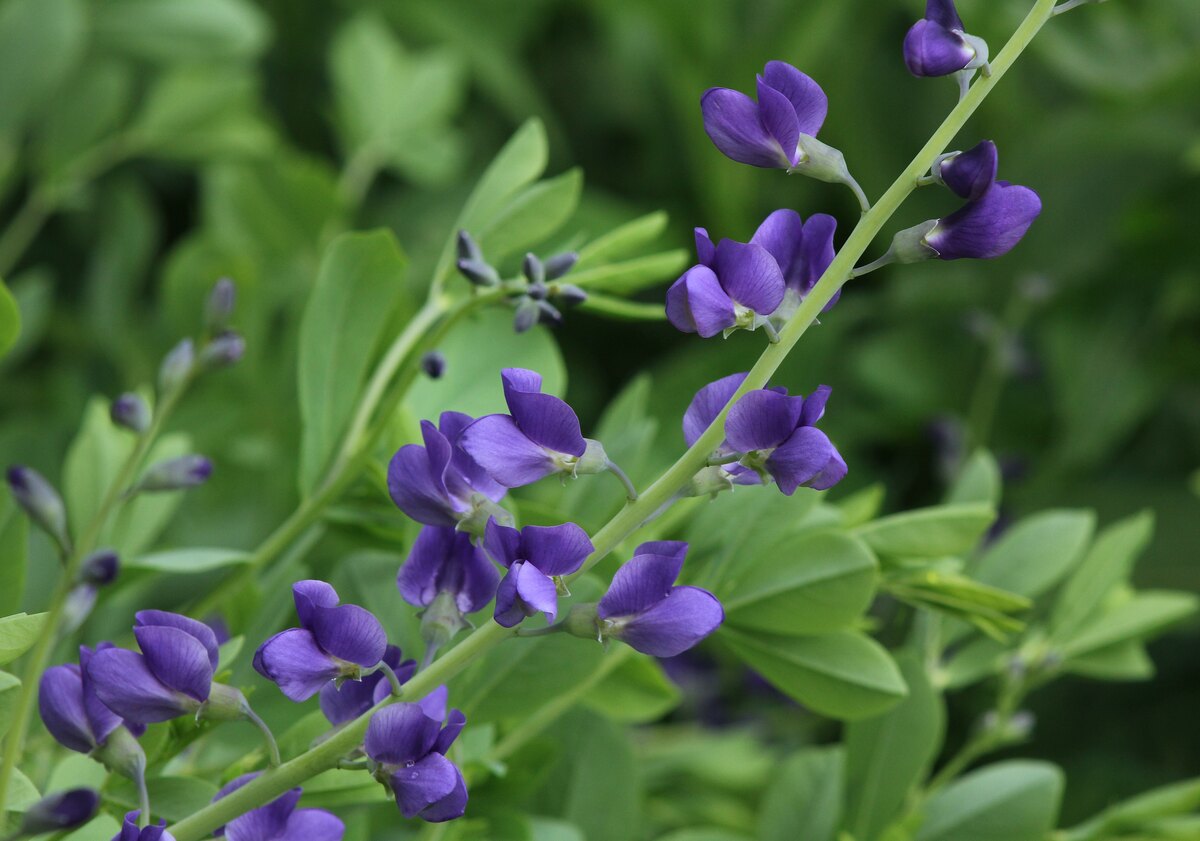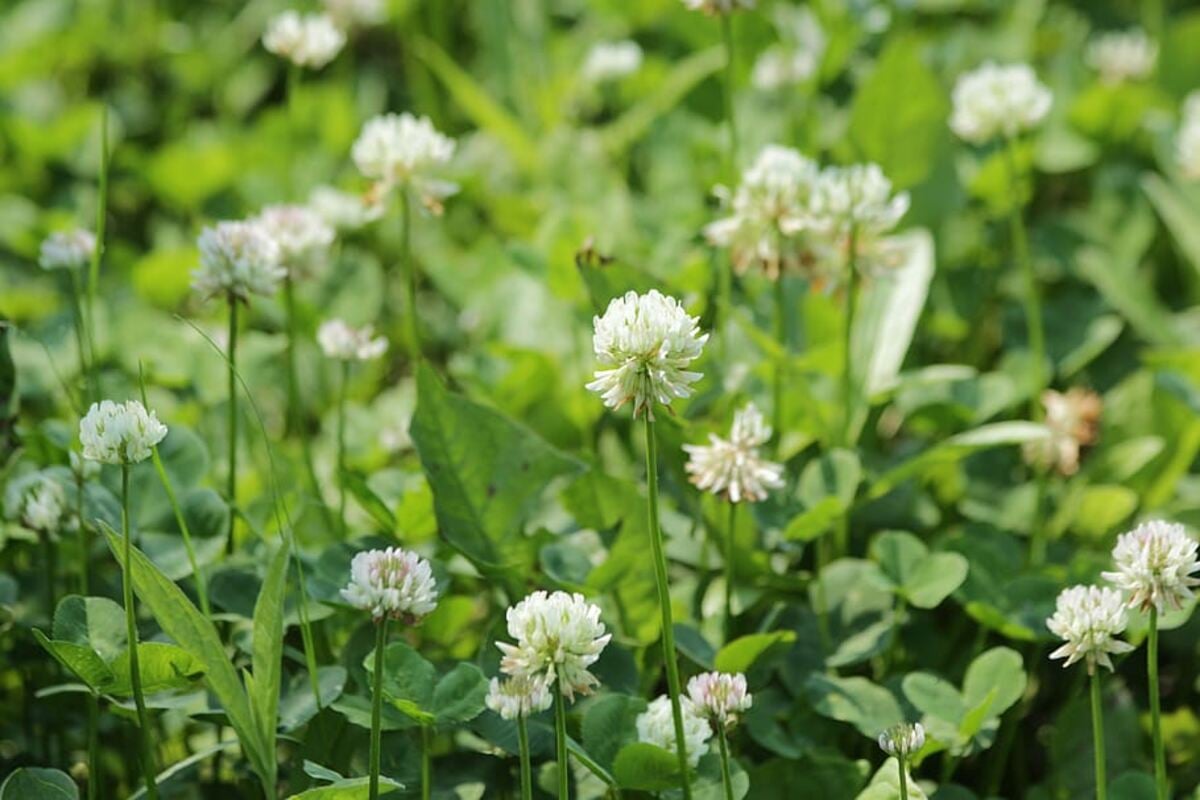
The air is getting warmer in Virginia Beach…the birds are chirping, and you can hear, as the wind blows, the flowers dueting: “The white jasmine comes together to the rose / On the flowering river shore, smiling at the morning / Come, let’s go down together.”* To celebrate this inspiring season, we bring you the 10 best tips for a lush spring lawn in Virginia Beach.
1. Assess Your Lawn
The first step is to do an overall assessment of your lawn. Knowing what exactly is happening with your lawn before you move forward will help you treat the lawn properly. These are some of the things you should look for:
- Thatch: If the grass has a spongy feeling when you walk on it or if footprints take more than an hour to fade, your lawn might have excessive thatch.
- Weeds: Try identifying leaves and flower structure (clovers, for example, have three small “v” shaped leaves on each stem) to learn more about your soil’s condition.
- Insects: Look for small holes or signs of chewed-up grass, earth mounds, or spider webs in the lawn.
- Lawn diseases: Notice if your lawn has spots of dead or discolored grass.
Whether you plan on treating your lawn yourself or calling a local Virginia Beach professional, knowing the possible issues that you have will help make the treatment process a lot smoother so that you will be on your way to a much healthier lawn in no time.
2. Test your Soil
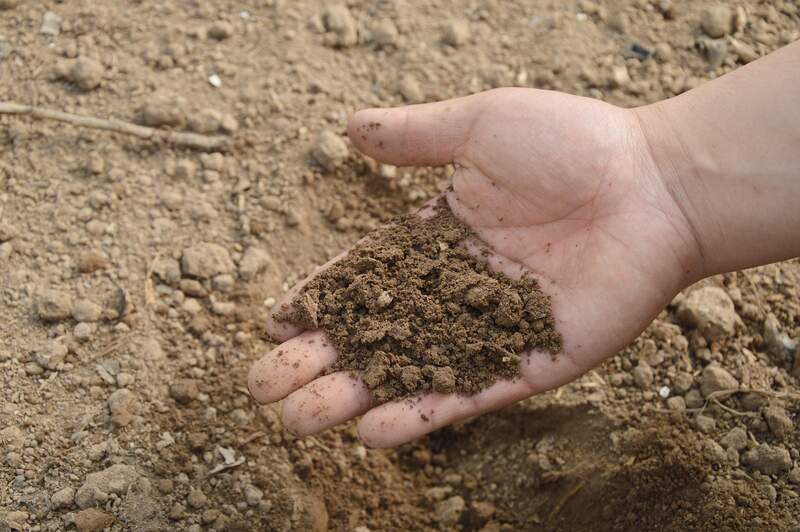
This should be the first step to start your spring lawn care. Soil testing is recommended to be done every 3 to 4 years, and the results show the overall fertility and pH of your soil.
Soil testing kits can be bought in your local nurseries or found at your local Virginia Cooperative Extension office. You can also get in touch with private testing companies that can offer a detailed report (but it can be a little pricier).
If you plan on collecting the samples yourself, make sure to follow these precautions so the collected samples will show accurate results:
- Use stainless steel or chrome-plated tools (galvanized, brass, or bronze tools can contaminate samples)
- Dig a hole of around 6 inches deep (for a home lawn)
- Collect soil from 10 different, random areas, but avoid borders
- Combine samples in a clean container and mix thoroughly before sending to the testing facility
How Do I Correct Sandy Soil?
Don’t worry, if you’ve got sandy soil that you don’t plan on fixing right now, we’ve got you covered! Throughout this guide, we’ll talk about the specifics of sandy soil care in each section.
3. Dethatch and Aerate
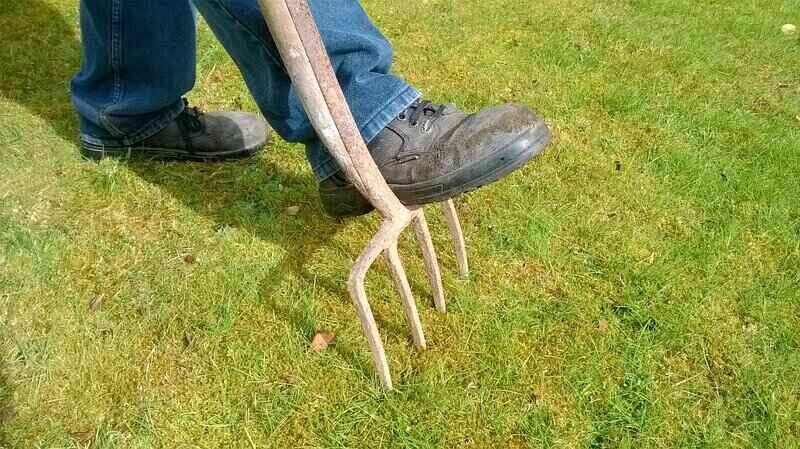
Dethatching and aerating are good preventive treatments for almost every problem you may face with your lawn:
- Dethatching in spring prevents pests (such as grubs or chiggers)
- Aeration promotes a deeper root system, which is beneficial for every soil condition
- Dethatching and aeration promote air circulation and help water and nutrients to penetrate the soil
When is the ideal time to dethatch and aerate your lawn? It depends on the grass type you have on your lawn. If your lawn has warm-season grass (Bermudagrass, St. Augustinegrass, or Zoysiagrass), dethatch and aerate in late spring or summer, around May. But if you use cool-season grass in your yard (tall fescue), dethatch and aerate in late summer or early fall.
Why aerate? Aerating the soil also gives a great advantage to your lawn when dealing with future weeds or thatch problems. By aerating the soil, you reduce the chances of excessive thatch accumulation, and since both the detaching and the aeration procedures can be performed around the same time of the year, you should include aeration when dethatching your lawn.
How to check for compacted soil: To check if your soil is compacted and would benefit from aeration, use the screwdriver test: If you are able to push 3 inches of the screwdriver into the ground, aeration won’t be necessary. Sandy soils are less prone to compaction problems due to their porosity, so make sure to do the test before aerating.
4. Topdress the Lawn with Compost
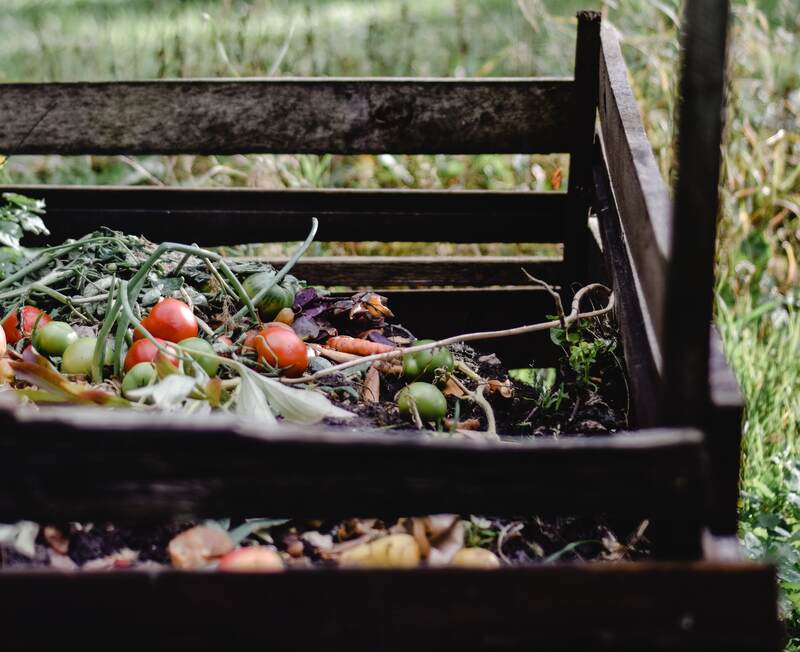
What’s the best way to amend sandy soils? Topdressing with compost. And the best time to do this is after you’ve dethatched or aerated (if necessary). Also, if you plan to overseed (Step 6), there’s no better time to add this “black gold” to help the new grass grow.
How topdressing with compost helps sandy soils:
- Improves water and nutrient retention: Due to the coarse size of the sand particles, water and nutrients travel through sandy soils quickly, but compost helps the soil hold on to the water and nutrients a bit longer, nourishing your lawn.
- Increases organic matter: Sandy soils have the lowest organic matter of any soil type.
- Adds beneficial microorganisms: Beneficial microorganisms help the grass use the nutrients you add to your lawn and help control diseases.
Grab a wheelbarrow, and spread the compost around the lawn. Then grab a rake to ensure it’s spread evenly over your landscape.
5. Fertilize
Before you think about stocking up on bags of fertilizer, have you tested your soil? The results of the soil test will indicate which fertilizer nutrients you should use, as well as how much. Acidic soils may need lime in addition to fertilizer, for example, while sandy soils require smaller but more frequent applications of slow-releasing nitrogen fertilizers.
And since cool-season and warm-season grasses have different growth cycles, the ideal time for fertilization differs:
- Cool-season grasses in VA Beach (tall fescue): Fertilize starting around May 15 or wait until fall.
- Warm-season grasses in VA Beach (Bermudagrass, Zoysiagrass, St. Augustinegrass): Fertilize starting in April, and apply again in May.
Don’t apply fertilizer too early (before spring green-up) or too much: Excessive spring fertilization may cause leaf growth at the expense of food reserves and prevent root growth, which can put your lawn at risk of injury from the summer heat and drought.
Want to know a free way to fertilize your lawn? Grass-cycling! Leave mulched grass clippings on your lawn to provide up to 25% of your lawn’s fertilization needs. And one last tip: Fertilizer application should be uniform for even growth, which is very hard to do by hand. Ideally, the best way is to apply the fertilizer using drop-type or rotary spreaders.
6. To Overseed or Not to Overseed, That is the Question
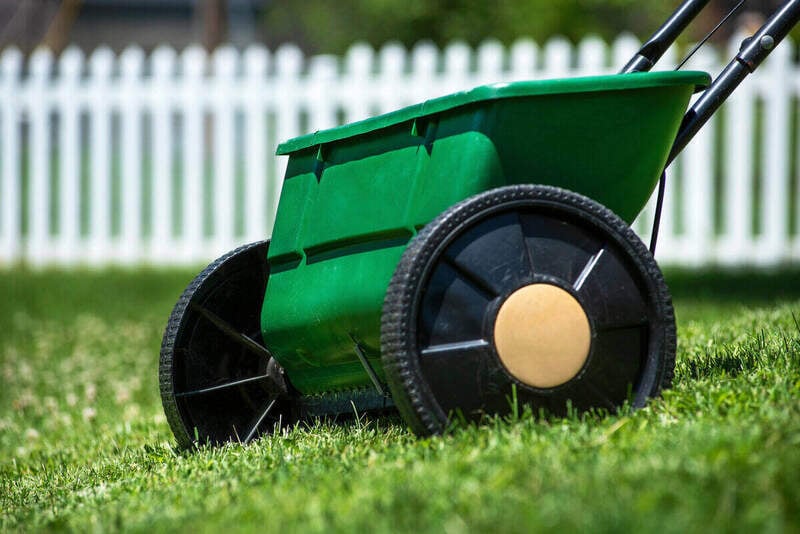
Does your warm-season lawn look thin or patchy? Overseeding this spring can turn a thin-looking lawn back into a full, healthy lawn in just a few months.
What is overseeding? Overseeding, also called reseeding, consists in broadcasting grass seeds over your existing lawn.
When should I overseed? The ideal time for seeding will depend on the type of turfgrass in your lawn, as shown in the table below:
| Grass Type | When to Overseed |
| Cool-season grasses | Fall (August to October) |
| Warm-season grasses | Late spring (May to June) |
7. Mow Correctly
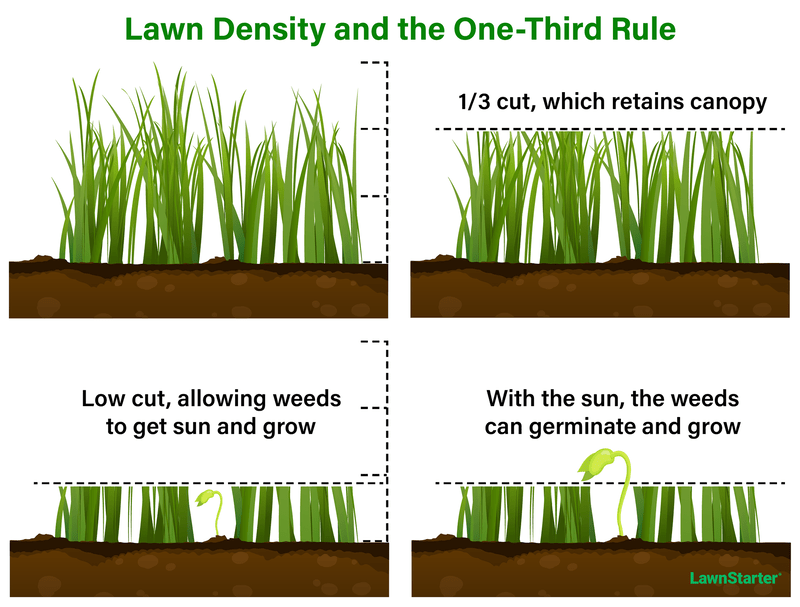
Curiously enough, most weed problems in Virginia lawns can be pointed to one single cause: lawn mowing. Let me explain: By mowing the grass too short, one weakens the grass quality, allowing weeds to invade. By mowing your turfgrass higher, you allow roots to deepen and provide a larger leaf canopy to promote photosynthesis.
Especially if dealing with sandy soil, encouraging deep rooting systems to grow is of utmost importance. Ideally, homeowners should mow their lawns at the tall end of the grass’s range, never removing more than one-third of the leaf’s total height.
| Grass Type | Mowing Height |
| Bermudagrass | 1½–2½ inches |
| St. Augustinegrass | 3½–4 inches |
| Zoysiagrass | 1-2 inches |
| Tall Fescue | 3 inches |
During spring and fall, the mowing frequency for cool-season grass is 4-5 days, while in summer it should be from 7-10 days. For warm-season grasses, the rule is reversed: Mow every 4-5 days during summer and every 7-10 days during spring and fall.
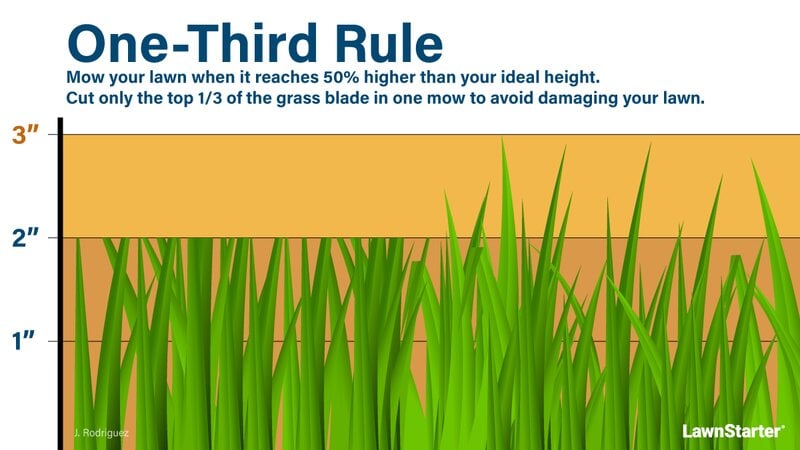
There are additional important guidelines for mowing:
- Follow the one-third rule: Never cut more than one-third of the grass’s height at once.
- Don’t mow when wet: Wait for the grass to dry after watering or when wet from the morning dew. Mowing the lawn when wet can cause compaction issues.
- Avoid clipping build-up: If the build-up is too much, a thick thatch layer may form, which is harmful to your lawn.
- Keep your blades sharp: A dull blade can tear the grass leaf, leaving it susceptible to diseases.
8. Control Weeds
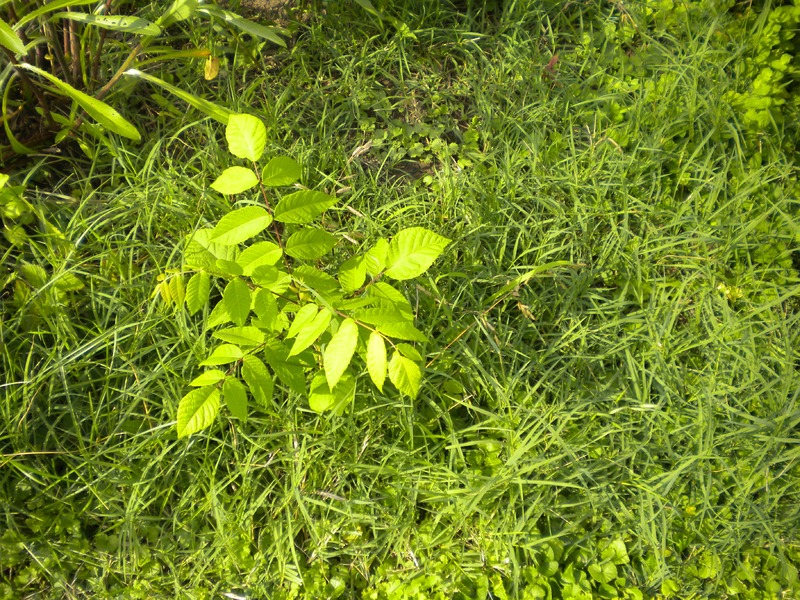
Weed management is a big task come springtime. But simply removing or killing the weeds is not enough. Your turf needs to be healthy and strong so the weeds stop invading your lawn. Remember, a thick, healthy lawn is the best defense against weeds!
The two main steps to managing weeds in your lawn are:
- Soil quality: The healthier the soil, the less you will need additional maintenance to keep your lawn healthy (such as fertilizers, pesticides, and watering). Healthy soil produces healthy turfgrass, and healthy grass outcompetes weeds. Any weed maintenance process starts with soil quality.
- Weed identification: Identifying the weed correctly will help you to know how to treat it. Some herbicides control certain weed types while causing no effect on others. Additionally, some weeds must be controlled only with pre-emergence herbicides and hand-weeding instead of post-emergence herbicides (annual and roughstalk bluegrass).
When to Apply Pre-Emergent or Post-Emergent Herbicides?
Pre-emergence herbicides: Early spring application is very effective to protect your lawn from crabgrass and goosegrass. Pre-emergent herbicides work by creating a barrier in the soil, affecting the growing weeds. For that to work, they should be applied when the soil temperature is between 50 to 55 degrees.
On an important note, remember: If you’re reseeding the lawn during spring, use herbicides only after overseeding. If done so before reseeding, wait for 2 to 3 months until the herbicide effect dissolves.
Post-emergence herbicides: Apply when the weed is still young (only a few leaves) so the herbicide works more effectively. Post-emergent herbicides actively kill weeds that have already popped up.
When working with post-emergence herbicides, it is most important to take into account the grass type and the weed species. The product label should inform you if it is formulated for cool- or warm-season grasses and the type of weed it controls. Check this information to avoid damaging your turf.
9. Treat Diseases
Springtime is usually when lawn diseases spread in warm-season grasses (such as Bermudagrass or Zoysiagrass, the most commonly used in Virginia) due to the warmth and humidity this season brings — a cozy environment for fungi.
Fungicides are an important part of treating lawn diseases but are not the only step needed: Proper fertilization, mowing, and irrigation are also a big part of preventing this problem in the first place.
Here are some of the most common lawn diseases in Virginia Beach:
- Dollar spot: This disease is caused by the Clarireedia jacksonii fungus, and the main signs are straw-colored spots the size of a silver dollar coin. In the morning, you might see mycelium roots that look like a white, fluffy growth. Since the dollar spot fungus is resistant to fungicides once it infects the lawn, the best approach is to prevent the fungus by applying fungicides in late April.
- Brown patch: Big, circular patches of brown color with a gray or white “ring” around the affected area are indications you might be dealing with brown patch. This is one of the most damaging fungi in Virginia. It often affects tall fescue, the most commonly used cool-season turfgrass in Virginia.
It occurs when the weather is warm and humid. When heavy infestations are combined with heat stress and drought, the lawn may be a total loss. But if managed properly, the lawn can recover when the fall comes. You can prevent it by applying fungicides every month from May to August.
- Red thread and pink patch: Pink or red patches and cottony pink mycelium visible in wet conditions are telltale signs of these fungal diseases. Although they will not kill your lawn, red thread or pink patch may leave it susceptible to other, more aggressive diseases. Applying fungicides in early April can successfully prevent them.
- Gray leaf spot: This disease commonly affects tall fescue and is aggravated during long periods of rainfall with warm temperatures. It is an aggressive disease and herbicide applications can only prevent infection of new areas, while already affected areas cannot be recovered.
- Spring dead spot: This one is the most common disease for Bermudagrass. Dead patches of turf appear as soon as spring comes along. It is usually found in compacted areas or areas with high foot traffic after a harsh Virginia Beach winter.
How to Prevent Lawn Diseases
While using fungicides can help remediate existing infections, taking additional cultural control measures is most often recommended when it comes to lawn diseases in general. You can help your lawn all year round by:
- Applying fertilizer to increase nutrient uptake
- Pruning shrubs and trees to reduce shade
- Watering correctly for your soil type to avoid moisture stress and doing so in the early morning hours
- Dethatching and aerating to break the dense thatch layer that facilitates fungal infections. This also helps increase air circulation, which can dry out a fungus.
- Not mowing if you are dealing with an active infection. Mowing can help spread the disease to other areas of your lawn. Additionally, when mowing, keep the blades sharp.
10. Give the Lawn a Drink
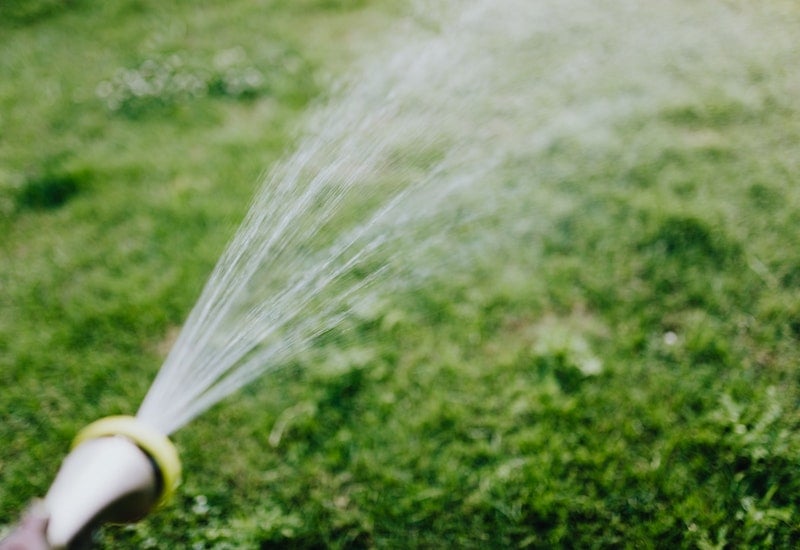
Water is essential for your lawn’s health: It facilitates photosynthesis and helps transport nutrients into the soil. Watering properly also reduces fertilizer and pesticide runoff into local reservoirs.
During spring, when the weather is hotter and dryer, apply 1 inch of water per week. You should water the lawn whenever the soil begins to dry out, but don’t wait for the grass to wilt. By following these tips, you should be able to maintain a healthy watering routine:
- Water in the early morning: Before 8 a.m. is best. When watering during the hotter hours of the day, the water can evaporate before properly penetrating the soil. Similarly, watering in the evening is not recommended since the overnight humidity might facilitate diseases.
- Use a slower application rate when using sprinklers: A faster watering rate may not allow the soil to absorb water, causing runoff and waste. The indicated rate for irrigation systems is half an inch per hour.
If you’re dealing with sandy soil, because it dries out faster than heavier soil, watering recommendations differ. You will need to water more frequently, but in smaller amounts, around 1/3 of an inch three times per week. Then wait to water again at the first signs of stress: when the leaves acquire a grayish or blueish color.
11. Take Care of Lawn Pests
The best pest control is to prevent these little creatures by maintaining a healthy lawn. But if you are already dealing with pests invading your lawn (such as mites, which commonly appear in early spring), here are some factors to assess before taking any measures to deal with pests:
- Is the damage caused by insects and not from drought, stress, or soil conditions?
- Identify the insect you’re dealing with. Not all lawn insects are pests — in fact, some insects are beneficial. You can get in touch with your local Extension office or with private lawn care professionals to help identify what kind of bug you are facing.
- Monitor the population to see if chemical control measures are necessary: If a population is too low, it might not be worth it to use pesticides on your lawn just yet. Natural pest control solutions combined with good maintenance measures may suffice to control the population.
- Determine the best timing for your lawn pest management tactics. When dealing with ants, for example, use insecticides during the daytime; to control chinch bugs, avoid nitrogen fertilization during spring; to treat armyworms or cutworms, apply chemicals in the early evening since they usually feed at night.
- Match the treatment to the pest species: Some pests feed on leaves and reside above ground (such as black cutworms), while some live underground (grubs, for example). Try to apply a targeted, rather than a broad-spectrum, treatment so the product will get rid of only the type of critters you’re dealing with. Read about the most common pests in Virginia Beach so you can identify and treat them.
- Combine cultural and biological methods: Cultural controls consist in following the mowing height recommendations for your turfgrass, while the biological control measures include buying seeds with beneficial fungus, or using nematodes to combat the pests, for example.
FAQ
Virginia Beach homeowners with warm-season grasses should fertilize their lawns during the late spring or early summer after the grass greens up.
Lawn fertilization costs around $380 for the average-sized U.S. lawn, but prices can range from $88 to $544.
The best time to aerate is during the fall or early spring for cool-season grasses or late spring and early summer for warm-season grasses.
Final Thoughts
Hopefully, throughout this guide we have given you valuable advice for lawn maintenance in the springtime. We’ve talked about important preventive practices that will improve your lawn’s quality and management tips for dealing with diseases and pests. But if you still have doubts, get in touch with the best Virginia Beach lawn care service to give you a helping hand.
*Lakmé by Leo Delibes
Photo Credit: GREEN HILL, VIRGINIA BEACH, VA / JERRYE & ROY KLOTZ, M.D. / Wikimedia Commons / CC BY-SA 4.0

